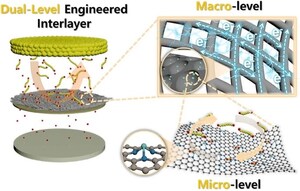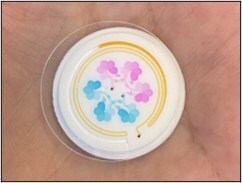
Chung-Ang University Researchers Revolutionize Non-Destructive Testing with purpose-built AI Technologies
The proposed approach produces high-fidelity and defect-aware ultrasonic images, outperforming traditional techniques
SEOUL, South Korea, Nov. 10, 2025 /PRNewswire/ -- System reliability and safety are paramount across industries such as semiconductors, energy, automotive, and steel, where even microscopic cracks or defects within structures can critically affect the performance. Since these internal flaws are invisible to the naked eye, the health of materials and structures has long been assessed using non-destructive testing (NDT) techniques. NDT allows the examination of internal conditions without damaging the structure itself. However, in practice, it remains extremely difficult to identify internal defects precisely and in detail.
Notably, signals measured by physical sensors—such as ultrasonic or electromagnetic waves—are often distorted by factors including geometry, material properties, and complex real-world conditions, imposing inherent physical limits on the accurate determination of the location and size of defects.
But what if artificial intelligence (AI) can 'see' what the human eye cannot?
Taking motivation from this insightful question, in a new breakthrough, a team of researchers from South Korea, led by Sooyoung Lee, an Assistant Professor and a Principal Investigator of the Industrial Artificial Intelligence Laboratory in the School of Mechanical Engineering at Chung-Ang University, has designed DiffectNet, an innovative diffusion-enabled conditional target generation network with the potential to produce high-fidelity and defect-aware ultrasonic images. Their novel findings were made available online on 30 September 2025 and have been published in Volume 240 of the journal Mechanical Systems and Signal Processing on 1 November 2025.
Prof. Lee remarks: "If the limitations of traditional methods can be overcome through the learning and reasoning capabilities of AI, it becomes possible to elevate the integrity and safety standards of industrial systems to an entirely new level. The proposed technology is not merely an attempt to apply AI to engineering problems, but a fundamental breakthrough. It involves the development of a generative AI technology capable of reconstructing hidden cracks inside structures in real time, thereby overcoming the physical limitations of traditional methods."
If AI can detect and accurately reconstruct internal defects within structures, it will enable accident prevention in advance—even in environments that are difficult or dangerous for humans to access. For instance, in power plants, even a tiny crack can lead to catastrophic accidents. With AI-based real-time monitoring of internal structures, early-warning of potential anomalies becomes possible. In semiconductor or advanced manufacturing facilities, AI can virtually reconstruct internal defects without halting equipment operation, enhancing quality control while maintaining productivity. Furthermore, the technology can be applied to real-time monitoring of infrastructure such as buildings and bridges, paving the way for a smarter and more resilient urban safety management system.
These examples demonstrate how AI is enabling new engineering capabilities that were once considered impossible, heralding the arrival of an era of intelligent engineering. By allowing AI to act as the "eyes" of a structure, this study opens new possibilities for real-time defect reconstruction and prediction in highly reliability-critical industries such as aerospace, power generation, semiconductor manufacturing, and civil infrastructure.
"AI is evolving beyond a mere tool for data analysis and learning—it is becoming an active agent that expands the very boundaries of engineering itself. Moving forward, our laboratory will continue to lead research in developing AI-driven engineering technologies, pioneering an era in which AI redefines the field of engineering," concludes Prof. Lee.
Reference
Title of original paper: DiffectNet: diffusion-enabled conditional target generation of internal defects in ultrasonic non-destructive testing
Journal: Mechanical Systems and Signal Processing
DOI: 10.1016/j.ymssp.2025.113454
About Chung-Ang University
Website: https://neweng.cau.ac.kr/index.do
Media Contact:
Sungki Shin
02-820-6614
[email protected]
SOURCE Chung-Ang University








Share this article